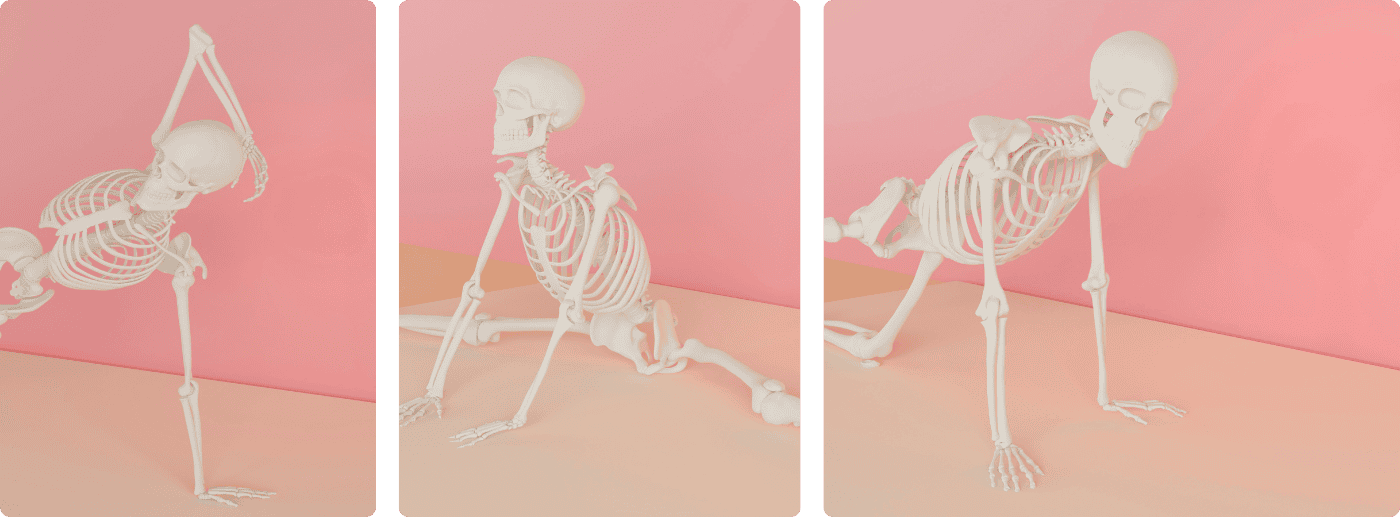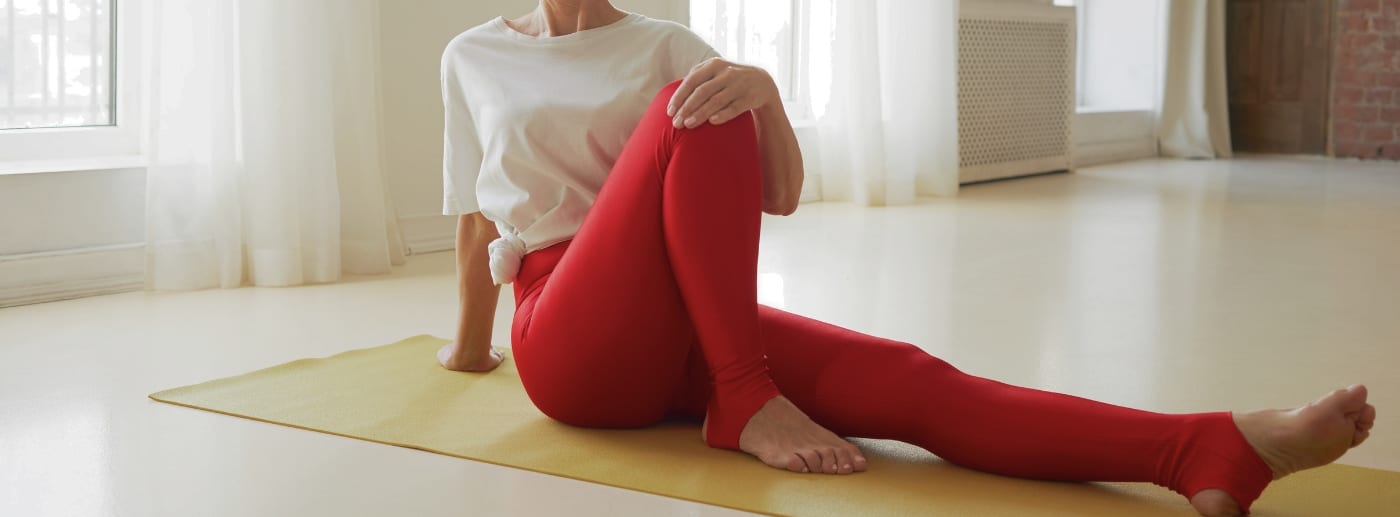World Osteoporosis Day (October 20)
October 20 is World Osteoporosis Day, and chances are, you’ve heard the same recycled advice: drink milk, take vitamin D, lift weights. Important, sure. But bones are weirder, smarter, and far more dynamic than most people realize. They’re constantly listening to your muscles, your nerves, even the way you move in space. When they stop getting those signals, that’s when things start to go wrong.
That’s where HiDow’s TENS/EMS devices come in. At first glance, they’re about pain relief. Spend more time with them, and you realize they’re also training tools, circulation boosters, and confidence builders. Those three things matter just as much for bone strength as the nutrients on your plate.
Muscles Keep Bones Talking
Bones are alive with cells called osteocytes, which sit inside tiny channels known as canaliculi. Their job is to sense strain. Every time a muscle contracts and tugs on bone, osteocytes pass the message along to osteoblasts, the builders, to reinforce tissue (NIH, n.d.). It’s a microscopic conversation happening with every step, lift, or stretch.
When that conversation quiets down, bones weaken. Astronauts in space are the most extreme example. Without gravity pulling on their muscles and bones, they can lose measurable bone density in a matter of weeks (LeBlanc et al., 2000). Here on Earth, EMS stimulation helps keep that dialogue going. By activating muscle groups around the hips, spine, and wrists, HiDow devices keep bones hearing the right signals.
Balance Is a Split-Second Skill
Osteoporosis doesn’t just increase the chance of fracture; it raises the stakes of every stumble. Most hip fractures, for example, are caused by a simple sideways fall onto the hip (International Osteoporosis Foundation, n.d.). What prevents those falls in the first place is the body’s ability to react quickly.
That ability comes from proprioceptors, tiny sensors in muscles and tendons that constantly update your brain about where your body is in space. With age, proprioceptive input slows down, muscles weaken, and balance falters. Reaction time shrinks to milliseconds, and sometimes the body just doesn’t get there in time.
HiDow stimulation trains stabilizer muscles and keeps those pathways active. The stronger and more responsive the system, the better the odds of catching yourself before a stumble becomes a fracture.

Pain Silences the System
Chronic pain is one of the biggest barriers to bone health. It discourages people from moving, which weakens muscles, disrupts balance, and reduces the signals bones rely on to maintain strength. Pain doesn’t directly erode bone, but it locks the entire system in place.
HiDow TENS therapy lowers pain at the nerve level, making it easier to move with confidence. Once movement returns, the feedback loop restarts. Muscles contract, circulation improves, bones sense the strain, and osteoblasts keep building. Pain relief isn’t just comfort; it’s permission to stay active in the ways that matter most.
Small Signals Add Up
Bone renewal is a constant process. Around ten percent of the adult skeleton turns over every year, and repetition is what keeps it strong (NIH, n.d.). Even small contractions feed the trabecular bone, the honeycomb-like structure inside bones that gives them flexibility and resilience.
Circulation plays an equally critical role. Bones don’t have large arteries of their own. Instead, they rely on a dense network of microvessels to deliver oxygen and minerals into the marrow. When that flow slows, repair slows (Hendriks et al., 2020). EMS sessions improve local circulation, keeping those delivery routes open. Some HiDow devices also feature microcurrent modes — ultra-low electrical signals that mimic the body’s own. Early research suggests these currents can encourage cellular repair and may even support bone remodeling (Xu et al., 2019; Griffin & Bayat, 2011). A short session may feel subtle, but stacked consistently, those inputs create resilience at the microscopic level.
Strength That Meets You Where You Are
Heavy weights can be great for bone health, but they’re not realistic for everyone. For many older adults, the risk of injury or fracture outweighs the benefits. And once a fracture happens, the risk of another rises sharply (Kanis et al., 2004).
HiDow EMS offers an alternative. It engages muscle, supports balance, and stimulates circulation without adding external strain. Research shows that neuromuscular stimulation can improve strength and endurance even in older adults, especially when mobility is limited (Rahmati et al., 2021). Strength training doesn’t have to mean barbells. It can mean keeping the right signals flowing in a safer, more accessible way.
The Bigger Picture
Bones are alive, reactive, and always listening. They depend on strain signals from muscles, positional cues from proprioceptors, and a steady supply of oxygen and minerals through microvessels. Pain can silence the system, but relief can restart it.
HiDow devices are designed to keep those systems active. They help muscles contract in ways bones respond to, they improve circulation that fuels repair, they support balance and stability, and they make consistent micro-workouts possible. Some also add microcurrent to the mix, echoing the tiny electrical charges bones naturally generate when stressed (Xu et al., 2019). It’s another signal in the body’s own language, layered onto the broader system that keeps bones resilient.
Key Terms
Bone cell that senses strain and directs the remodeling process.
Microscopic channels that connect bone cells and carry signals.
Bone-building cell that deposits new tissue.
Sensor in muscles and tendons that helps the brain track position and movement.
The inner, lattice-like architecture that gives bone its strength and flexibility.
The small electrical charges bones generate when stressed.
Griffin, M., & Bayat, A. (2011). Electrical stimulation in wound healing: A review of evidence. Journal of Wound Care, 20(5), 232–239. https://doi.org/10.12968/jowc.2011.20.5.232
Hendriks, K., Smeets, H., Reilly, G. C., & Klein-Nulend, J. (2020). Bone marrow blood vessels and bone health. Frontiers in Endocrinology, 11, 335. https://doi.org/10.3389/fendo.2020.00335
Kanis, J. A., Johnell, O., De Laet, C., Johansson, H., Oden, A., Delmas, P., Eisman, J., Fujiwara, S., Garnero, P., Kroger, H., McCloskey, E. V., Mellstrom, D., Melton, L. J., Pols, H., Reeve, J., Silman, A., Tenenhouse, A., & WHO Study Group. (2004). A meta-analysis of previous fracture as a risk factor for future fracture. Osteoporosis International, 15(8), 648–658. https://doi.org/10.1007/s00198-004-1674-4
LeBlanc, A., Schneider, V., Shackelford, L., West, S., Oganov, V., Bakulin, A., & Voronin, L. (2000). Bone mineral and lean tissue loss after long duration space flight. Journal of Bone and Mineral Research, 15(4), 657–664. https://doi.org/10.1359/jbmr.2000.15.4.657
National Institutes of Health Osteoporosis and Related Bone Diseases National Resource Center. (n.d.). Bone biology basics. U.S. Department of Health and Human Services. https://www.bones.nih.gov/
Rahmati, S., Boonstra, A., & Gerrits, K. H. L. (2021). Neuromuscular electrical stimulation and muscle strength. Physical Therapy, 101(4), pzab041. https://doi.org/10.1093/ptj/pzab041
Xu, C., Dai, L., Liu, H., & Zhang, Q. (2019). Microcurrent stimulation promotes osteoblast proliferation and differentiation in vitro. Bioelectromagnetics, 40(3), 200–210. https://doi.org/10.1002/bem.22178

Related Stories
When Courage Takes Flight: Lessons From a Women’s Skydiving Record Attempt
Photo by Taylor Buffington (T-Buff) We went to Eloy, Arizona on a mission — to...
Nov
Sciatica: 1, LeBron: 0 (For Now)
File photo: LeBron James #6 of the Los Angeles Lakers. (Photo: Thearon W. Henderson /...
Oct
Pickleball vs. Tennis: The Science of Recovery
For years, tennis was the stand-in for movement: endurance, coordination, and power all at once....
Oct
5 Ways to Support Bone Strength with HiDow
World Osteoporosis Day (October 20) October 20 is World Osteoporosis Day, and chances are, you’ve...
Oct
FDA-Cleared Is a Flex. Here’s Why.
Pulling Back the Curtain You’ve seen it on boxes, on websites, in ads: FDA-cleared. It...
Sep
This Is Fibro. This Is Larry.
September is Pain Awareness Month. And we’re not here to give you medical definitions or...
Sep